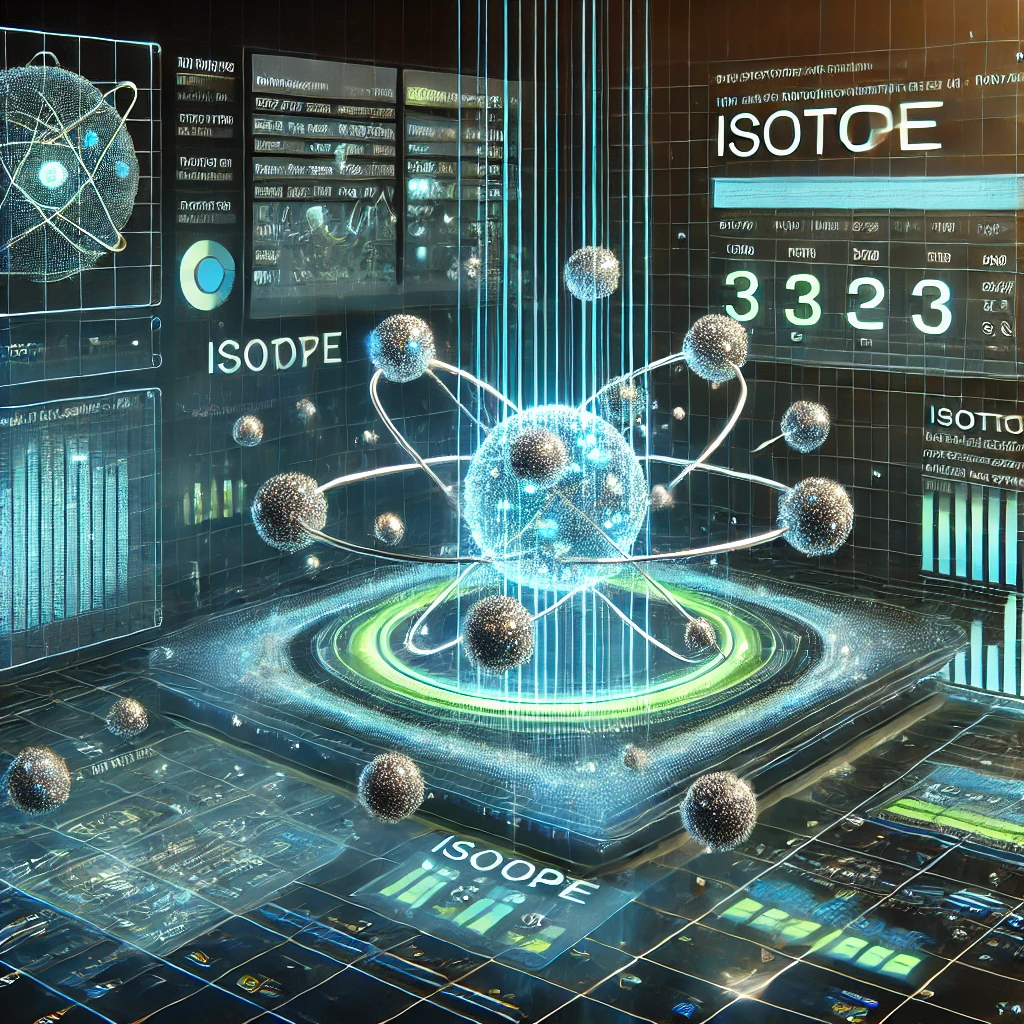
Data Visualization
Isotope Data and Labeling: At the core, each isotope is represented by its atomic symbol, atomic mass, and neutron/proton count. The visualization might display this data alongside each atomic model, with isotopes labeled individually. Elements could be organized by isotope family or grouped in a way that highlights differences and similarities. Atomic Structures: Each isotope’s atomic structure can be represented with a nucleus, protons, neutrons, and electrons. The nucleus might be shown as a cluster with highlighted particles, and electrons orbit around, giving the atom a familiar "orbiting" look. For added clarity, particles could be color-coded (e.g., protons in red, neutrons in gray, and electrons in blue). Futuristic Data Panels: Floating data panels or HUD (heads-up display) elements give the visualization a high-tech feel. These panels might include isotope names, atomic numbers, or isotope stability indicators. The panels are typically semi-transparent with neon accents, simulating holographic screens or lab instruments. Digital Aesthetic: The visualization often features a sleek, minimalistic background with subtle grids or geometric lines, adding depth without distracting from the data. Neon colors like cyan, green, and blue bring a futuristic edge, while dark backgrounds provide contrast to make data points and labels pop. Graphical Elements and Charts: To enhance the data-centric focus, the visualization might include charts or graphs displaying properties like isotope stability, decay rates, or half-lives. These elements are typically displayed as digital graphs, pie charts, or bar charts, making the visualization not only informative but also visually dynamic. Purpose of Visualization: This type of visualization is ideal for educational tools, scientific websites, or lab software, offering an engaging way to explore isotopes and atomic data. The digital, high-tech look reflects precision, clarity, and innovation—key values for institut
Let's connect
Whether you’re interested in our services, have a question, or just want to chat about the excitingHyper Space Venture and technology, we’d love to hear from you! At World Space, we believe in the power of connection and collaboration. Reach out to us, and let’s explore how we can work together to achieve great things. Connect with us via email, social media, or our contact form—we’re here to help.
Proposals from universities, private space companies, or independent researchers.
We invite proposals that aim to advance space science, engineering, and technology. Whether you're from an academic institution, a private space tech company, or working independently in the field, we are keen to collaborate on innovative initiatives. Key areas of interest include: Satellite Development: Mini/micro/nano-satellites, payload design, orbital deployment strategies. Propulsion Systems: Research on chemical, electric, hybrid, or experimental propulsion technologies. Astrophysics: Observational and theoretical studies of celestial phenomena, cosmology, and particle astrophysics. Deep-Space Exploration: Concepts and technologies for missions beyond Earth orbit, including interplanetary and interstellar research.
Contact